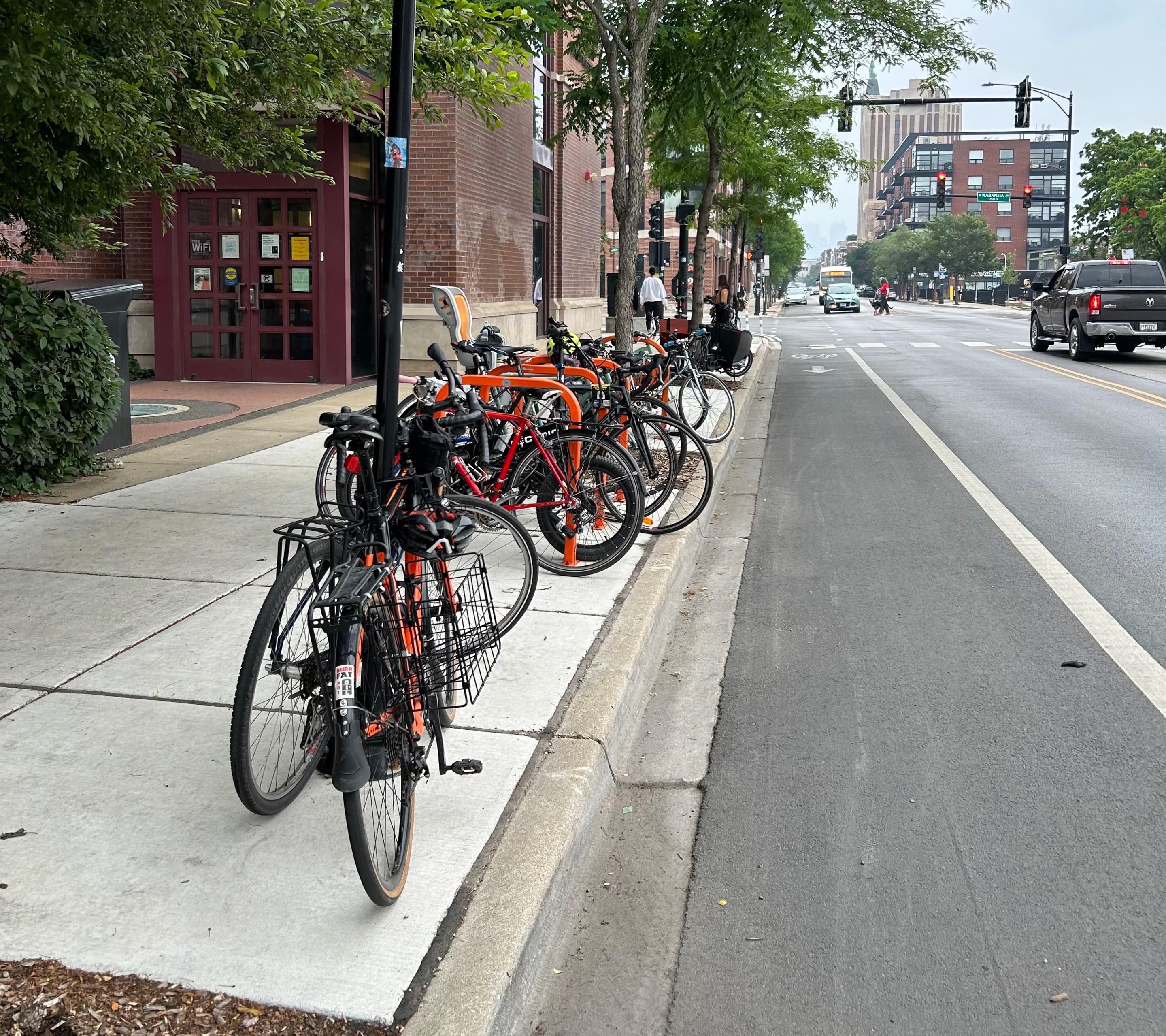A huge crowd turned out at the Bucktown-Wicker Park library on Monday for the Chicago Department of Transportation’s public meeting about new protected bike lanes planned for Milwaukee Avenue in the area slated for construction later this year. There wasn’t an open bike rack, pole, or small tree to lock a bike to for a block radius.
And the line to view plans for protected lanes that will run from North/Damen to Western avenues seemed almost as long as the stretch of roadway in question. The queue doubled back through the second-floor hallway of the library and continued on the first floor, almost reaching the checkout desk. But attendees waited patiently, several making pleasant chit chat, many carrying helmets, some with young children and coloring books in tow, and the vast majority in support of safer streets for bicyclists and pedestrians.
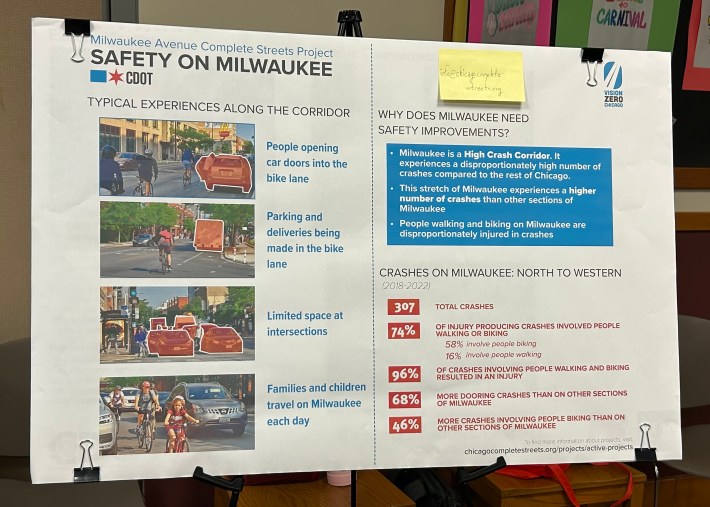
Milwaukee Avenue is Chicago’s busiest biking street, a direct route from neighborhoods on the Northwest Side to the Loop. It is also one of the most dangerous—six bicyclists have been killed on Milwaukee in the last two decades. And according to CDOT, more than 300 crashes have taken place on the North to Western stretch between 2018 and 2022, over half of them involving people on bikes.
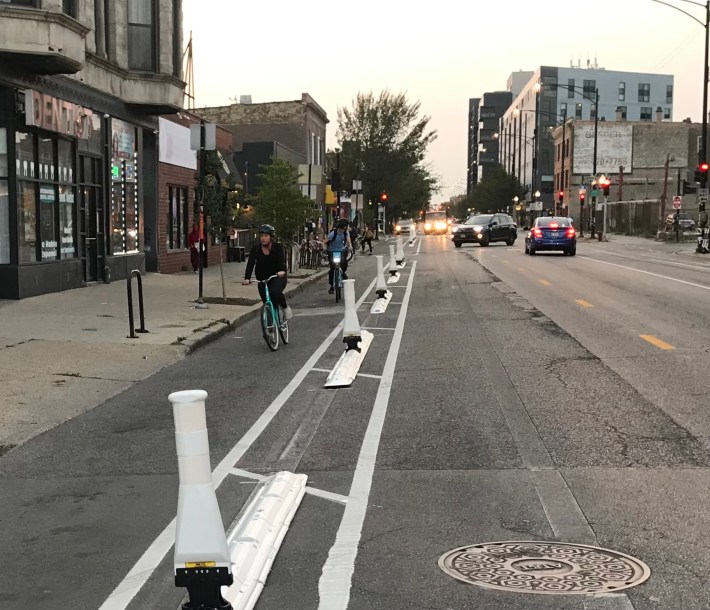
CDOT has gradually improved sections of the corridor, most recently adding plastic curb-and-bollard- and/or parking-protected lanes on Milwaukee from Western to California avenues in the 1st Ward. When the new plan in completed, it will join up with the 1st Ward bike lanes, adding roughly a mile of bike and pedestrian improvements in the direction of downtown. That's a step towards CDOT’s Chicago Cycling Strategy, which includes an uninterrupted safe biking route on Milwaukee from the northern city limits at Devon Street to the avenue's southern terminus in the West Loop.
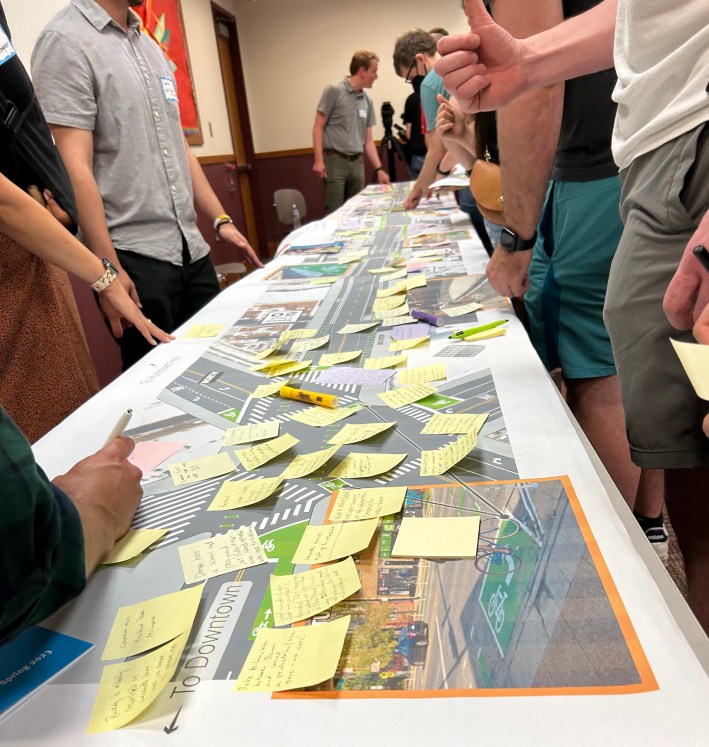
Inside the library community room, a detailed rendering of the proposed upgrades spanned ten folding tables. Six CDOT engineers were stationed along the route to answer questions and collect feedback. On the drawing, both north- and southbound bike lanes were relocated curbside and protected by concrete curbs, plastic bollards, and/or parked cars. Pedestrian improvements included raised crosswalks and bus boarding islands. The speed limit would also be reduced from the current default 30 mph to 20 mph—a change that more than doubles the likelihood of survival for a person struck by a driver.

Attendees were encouraged to contribute ideas on sticky notes which, by the time I entered the room after 45 minutes in line, were so heavily employed I had to occasionally peek under them to see details on the map. The complex six-way intersection of North/Milwaukee/Damen was particularly blanketed in little paper squares with notes of support for the proposed design changes and ideas for improvements. Planned upgrades at the intersection include green-painted left-turn bike boxes at corners, which allow bicyclists hesitant to make a left from a center lane to cross as pedestrians would, waiting in a designated spot in the road for the signal to change.
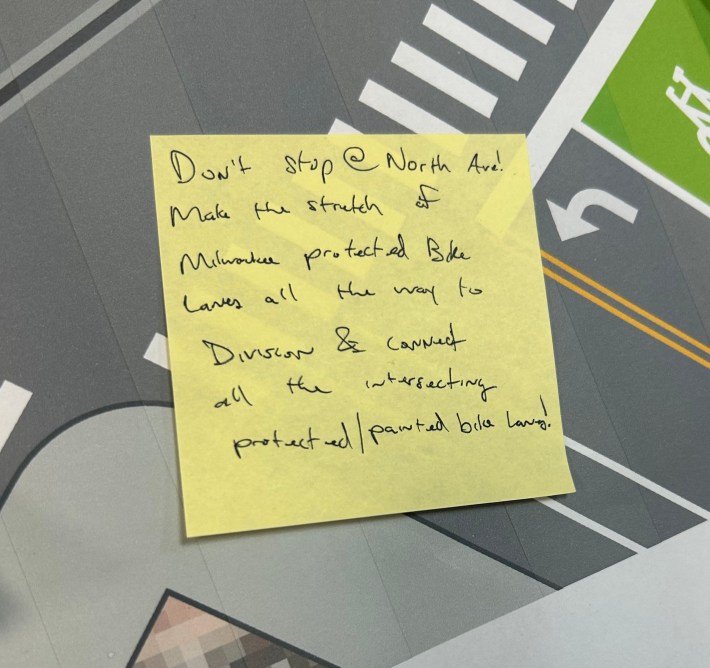
CDOT complete streets director Dave Smith said feedback at the event had been mostly positive with “a ton of people” appreciative of the effort to make biking safer and more accessible. “The flipside is parking impact, but this is about making streets safer for all road users.”
The addition of concrete curb protection will involve converting some existing car parking spots to bike lanes intermittently along the route. Before the Monday meeting, some local business owners expressed concern about how this change would affect their businesses. There was also some pushback against the 1st Ward protected bike lane installation, which also included car parking space conversion on a stretch of Milwaukee where CDOT found large numbers of parking spaces were often unused. That's also the case on this portion of the avenue, so it's unlikely the change will make much difference for retailers, other than encouraging more bike riders to patronize their businesses.
The bike lane construction will be part of a road resurfacing project which Smith said is slated to break ground later this year. Feedback from Monday’s meeting will be considered in the final design, and it happily looks like this project to make a particularly hazardous stretch of Chicago’s bike highway safer is moving forward.

Dd you appreciate this post? Please consider making a tax-deductible donation.
